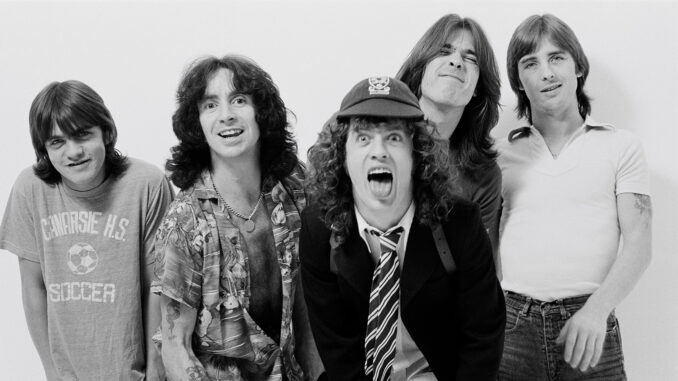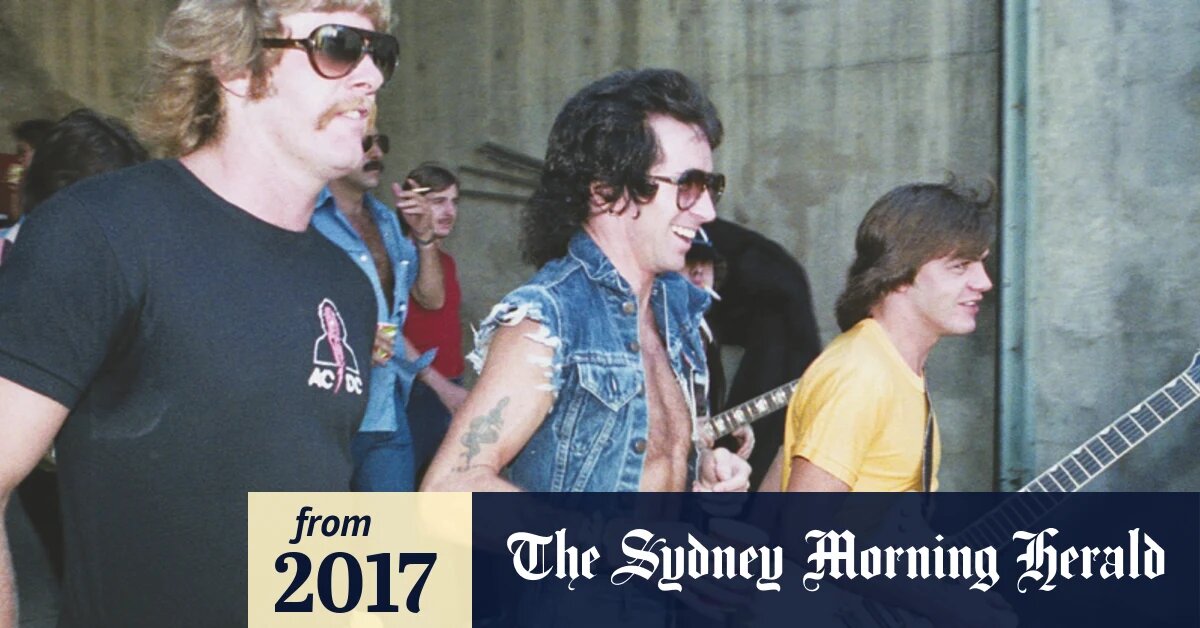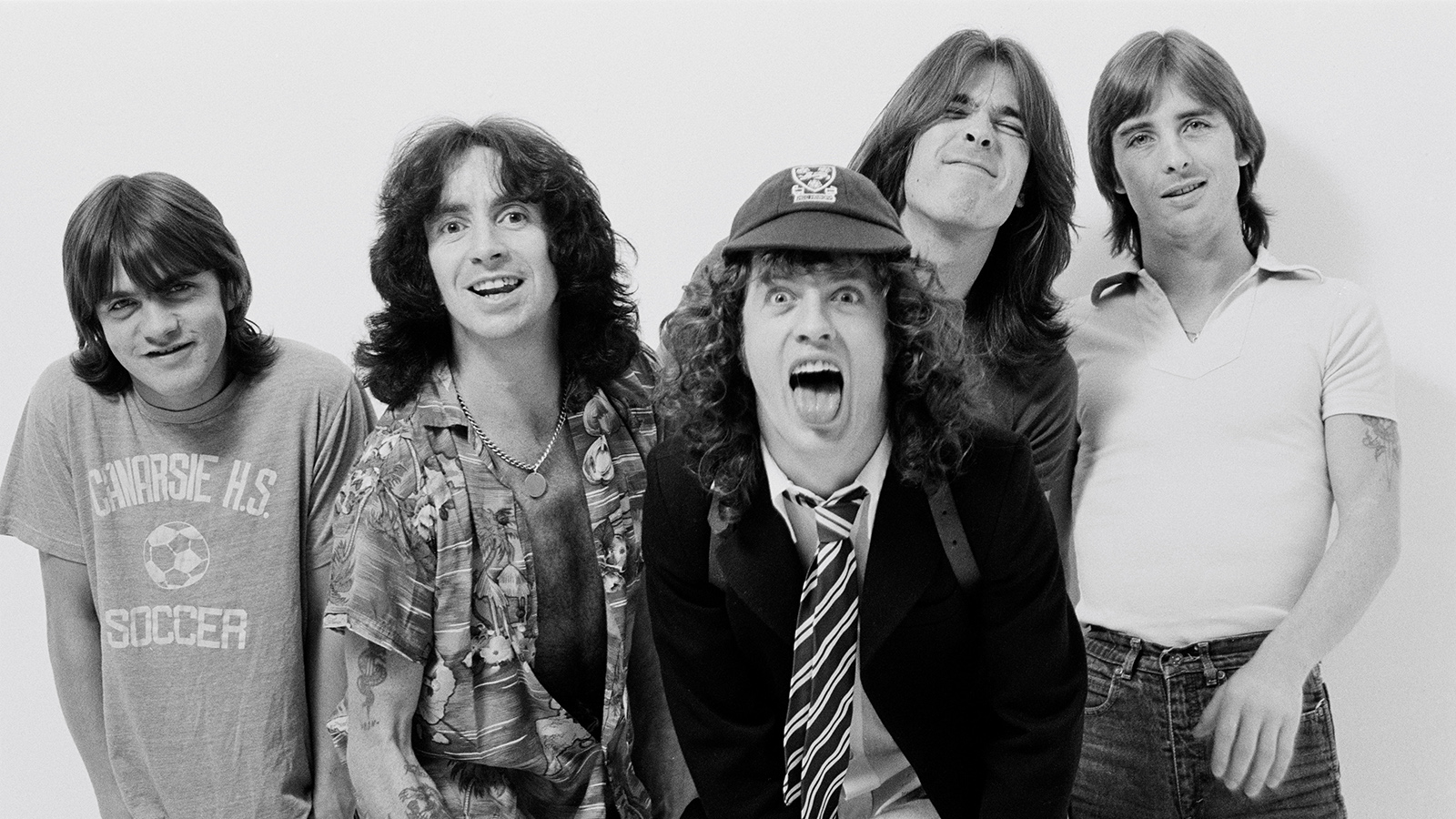
Bon Scott biography reveals tensions at the heart of AC/DC
The woman who was close to the singer at the end of his life is keen to set the record straight.
I book a return ticket from New York to Miami, Amtrak’s Atlantic Coast Service, a journey of more than 1550 miles – one way. Within minutes of leaving Manhattan’s Penn Station, the Silver Star is riding parallel to the highway, a rolling panorama of water towers, shipping containers, trucks, buses, concrete overpasses, electricity grids, swamps, uncut grass, junkyards, scrap metal, coal piles and billboards. New residential developments are springing up in Harrison, New Jersey. By Trenton, the state capital, the landscape starts becoming more suburban: American flags hanging on poles outside tidy clapboard vinyl houses in neat little streets, plastic outdoor table-and-chair sets on manicured front lawns, above-ground pools. In Virginia I start seeing tractors. By nightfall, after half a day travelling, I’ve only got as far as North Carolina with its forests, wooded groves and open fields dotted with sheds and farm machinery. It was into this vast industrial-pastoral America that Atlantic Records sent AC/DC in 1978. The big cities had yet to be won over.
That time, that era, will never come around again. It’s lost. So is that exceptional music. And so, soon, will be the people who knew this remarkable man called Bon Scott. It’s an almost impossible task to recreate Bon’s time in North America. I didn’t want to hear another recycled, wildly embellished story about Bon. I wanted to meet the people who knew another side of the man; who weren’t afraid to upset the members of AC/DC or Bon’s family and didn’t have something to hide or anyone to protect. They are rare and elusive. To do that, I had to travel to a city on the edge of the Caribbean, far away from Sydney, Melbourne, Perth, Los Angeles, New York and London. A place where, very possibly, Bon saw a glimpse of the future he’d always wanted: a good-looking woman he could be happy with, a country that was offering him new chances. There are only so many people who knew him and who haven’t spoken before. Finding them is one challenge. Finding those who are prepared to talk is another.
I realise now that what we draw from Bon’s story and the broader story of the band is ultimately personal: the music, the legend, the myth or all of it. It doesn’t really matter. If anything, the majority of fans would probably prefer to go on thinking of Bon as a sort of Peter Pan figure rather than confront the deeply flawed human being he really was. As Tony Platt, engineer of Highway to Hell and Back in Black, told me: “AC/DC fans should make their own minds up; that is the nature of celebrity. Your fans take the bits that suit them best.”
But I’m equally certain that Bon, the real Bon, struggled with the same sort of questions every one of us faces. What do I want out of life? Who do I want to end my days with? End it early? Grow old? When do I know I’ve done enough to be truly happy? The bald truth is Bon died pitifully, not heroically. For a man who inspired so many people, he let himself down to end his life the way he did.
It’s worth taking the train just to see the stars over South Carolina and the sunrise in Georgia. By the time the Silver Star stops in Jacksonville, Florida, the landscape changes again: trailer homes, palm trees. With each mile travelled it’s like I’m going back in time. The skies get bluer and wider. Orlando. Fort Lauderdale. West Palm Beach. Hollywood. Miami. In her 1987 book about the city, Joan Didion calls Miami “not a city at all but a tale, a romance of the tropics, a kind of waking dream in which any possibility could and would be accommodated”.

Waiting for me, patiently, at Miami Amtrak station in a black, green and white dress, even when I’m running two hours late, is American Thighs.
When I spoke to Holly X over the phone from New York and proposed coming to meet her in Miami, she had one important condition if we were to go ahead and publish her story: anonymity. There were two main reasons. The first was a prestigious professional position she wanted to protect. The second was her membership of Alcoholics Anonymous. She’s in her mid-50s, taller in person than I expect her to be, curvaceous, with high cheekbones, long white-blonde hair and heavily mascaraed eyelashes.
“I don’t want a bunch of old photos appearing any time someone Googles my name. I don’t want AC/DC fans contacting me. Anonymity is the foundation on which AA was built and why it works. People don’t need to know me, just my story.
“I haven’t read a lot that’s been written about Bon but everything I have read it’s all about his addiction and him getting high and stories about him being wasted and all this, and that was part of it but he was a really, really neat guy. I cared a lot about him. He was a lot of fun. He was a gentle person, gentle soul, in spirit, and very, very sensitive.”
She says they were together from “1978 till Bon died”, starting around the time AC/DC decamped to Miami for a two-week holiday before the 60-plus dates for the summer tour promoting Powerage.
Holly is not the first person who believes Bon wrote a number of songs on Back in Black – “several”, as she puts it – but her opinion is probably one of the most significant given her history with Bon. She was especially incensed that Have a Drink on Me was included on the album as a “tribute” to him. So furious was Holly that she personally confronted AC/DC rhythm guitarist Malcolm Young about it at an AC/DC gig on the Back in Black tour.


Leave a Reply